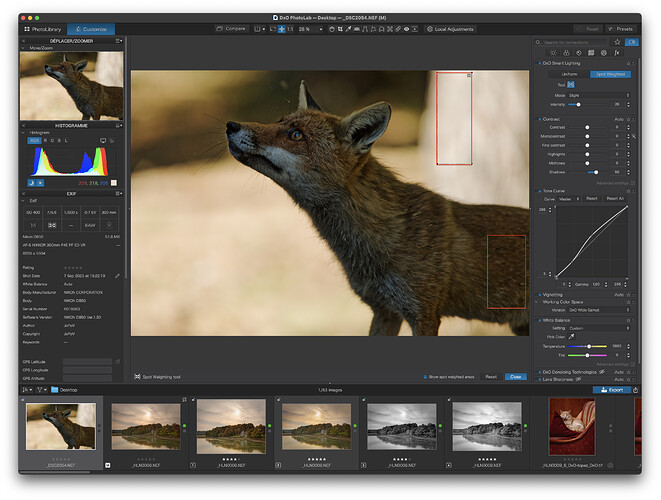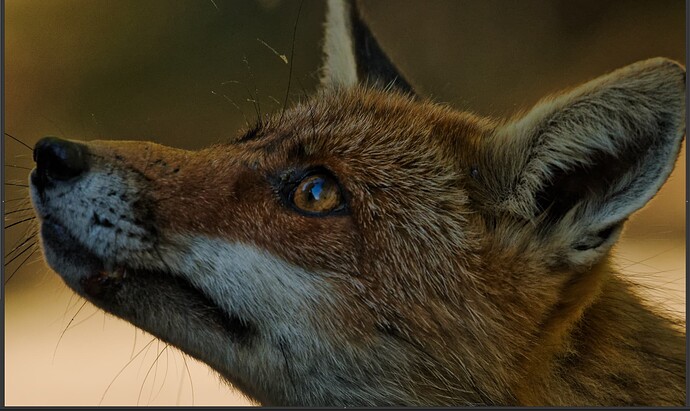There is no problem with your exposure. You have no blown highlights to worry about.
I am not sure why you applied exposure compensation of -⅔ in camera but there is still plenty of shadow detail available despite that.
I too use a D850 and can assure you that, as long as you don’t over-expose, DxOMark shows 13.37 stops dynamic range at 400 ISO. So plenty of room for shadow recovery.
Here is a screenshot of all the corrections I deemed necessary…
Once the lens module is selected and the four optical settings applied (Vignetting, Lens Sharpness, Chromatic Aberration and Distortion), I applied the default DeepPRIME NR (which is usually perfectly adequate). In fact, at 400 ISO on the D850, it really doesn’t need anything much at all in the way of NR.
Then I used the Smart Lighting tool in Spot weighted mode to select the darkest and lightest areas (see the red rectangles I have overlaid to show their positions more clearly)
I adjusted the White Balance to 6500°K/±0 to give a more natural look.
Next, just the slightest of Tone Curves to gently enhance the contrast and, finally, a touch of Shadow Fine Contrast from the additional FilmPack contrast sliders.
And here is a screenshot of the head at 100% in PL…
Personally, I would have gone with a smaller aperture (f/10?) to get a bit more of the body fur sharp but that is personal preference as you have obviously followed the golden rule of getting the eye beautifully sharp.
Almost forgot, here’s my DOP file…
_DSC2054.NEF.dop (13,3 Ko)

